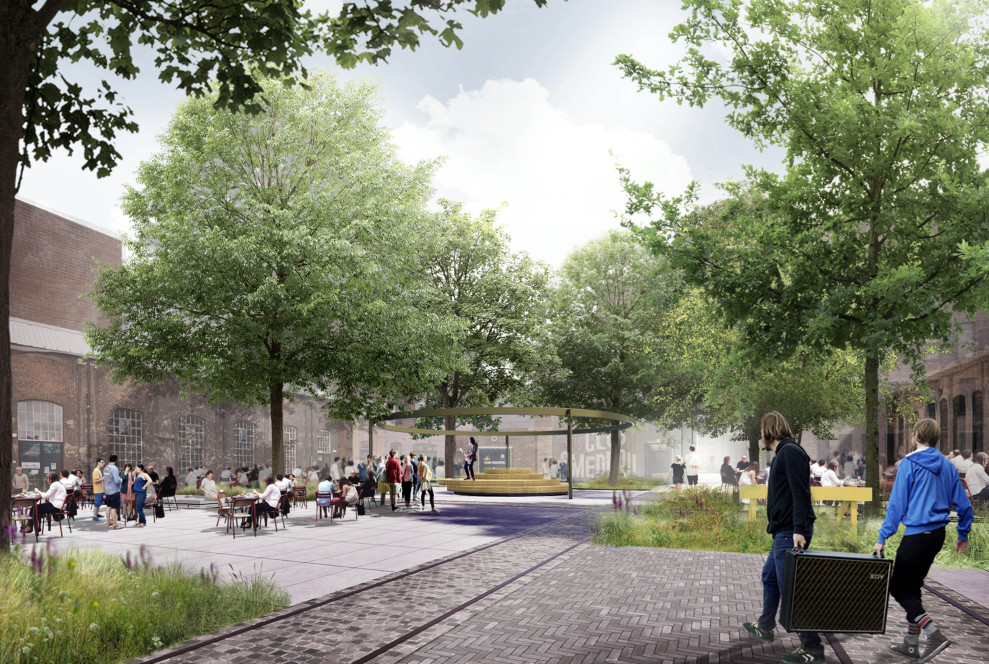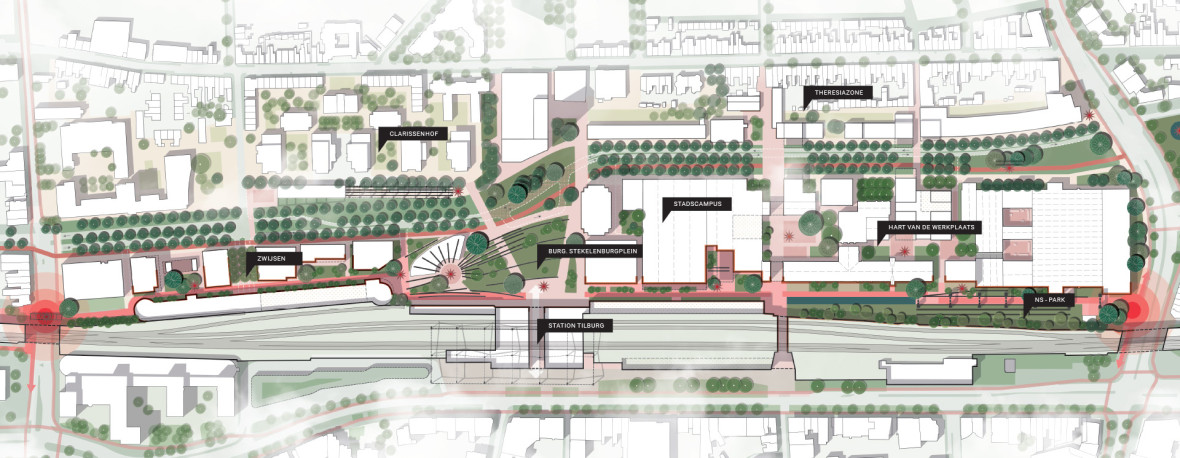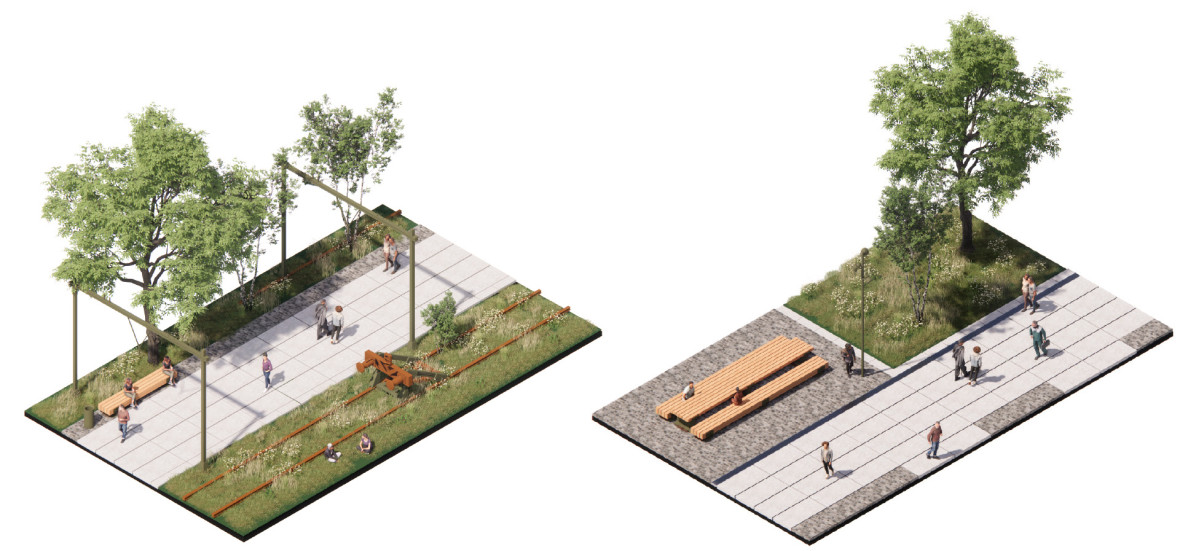


Until fairly recently, the NS railway workshop, which covers a large part of the Spoorzone (‘railway zone’), was surrounded by a fence, thus hiding this part of Tilburg from view. The old NS railway workshop was opened to the public in 2011, and now the Spoorzone is being discovered, developed and embraced. With developments including the Stadscampus (‘urban campus’) with the famous Loc-Hal library, the station building and the Clarissenhof neighbourhood, the first general ideas outlined in the area development policy document have become reality, and the NS railway workshop offers space for homes, events, creative activities and enterprise. Since 2021, Karres en Brands has been working on the Spoorzone public space and spatial frameworks for area development.

The cultural-historical values are reflected in the development plan, which seeks cohesion with the original layout of the NS workshop. The new layout is informed by the cultural-historical structure and organisation of the NS workshop – the unique transversal system. In addition to embedding the cultural heritage still present on the premises, the chosen approach focuses on the transversal system and shows off its structure.

Pedestrians are given priority in the spatial framework of the ‘rails and sleepers’, inner gardens and courtyards. The ‘rails’ provide the city connections and interconnect spaces in the east-west direction. The ‘sleepers’ are the ties that keep everything together and provide the north-south connections. They also complete the slow traffic network that gives access to the Dwaalmilieu (‘wander-around zone’), Kernwinkelgebied (‘main shopping area’) and Museumkwartier (‘museum quarter’). The two connections under the railway (Willem II underpass and Station underpass) play a crucial role in connecting the north side of the station and the main shopping area to the south of the station.
Tracks, overhead lines and other ‘industrial' legacy are echoed in the public space that is being developed. The choice of paving material, confinement, dimensions and routing of the paths, as well as familiar furniture, creates a recognisable identity in harmony with the railway heritage. The long lines are particularly manifest in the Locomotiefboulevard, which will be given a continuous profile. The functional zoning of work environments where locomotives and carriages used to be serviced provides rich inspiration for the new design.
| Location. | Tilburg, Nederland |
|---|---|
| Assignment | Quality atlas public space, climate adaptation and various partial elaborations |
| Size | 40 ha |
| Design | 2021 - present |
| Construction | 2023 - present |
| Status | Quality atlas public space, climate adaptation and various partial elaborations |
| Client | Gemeente Tilburg and SDK Vastgoed |
| In collaboration with | Gemeente Tilburg, SDK Vastgoed, Lith Advies, WSP Infra, Atelier LEK - Sub areas: DAT Architecten, De Zwarte Hond, Orange Arch |